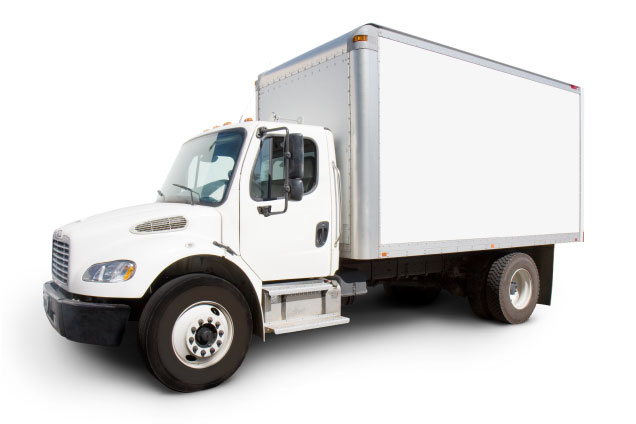Unlock the Secrets to Successful Long-Term Sofa Storage
Posted on 24/05/2025
Unlock the Secrets to Successful Long-Term Sofa Storage
Are you planning a remodel, moving, or simply need to preserve your treasured sofa for an extended period? No matter the reason, ensuring your couch stays in pristine condition during storage requires more than just tucking it away in a corner. Understanding the best practices for long-term sofa storage makes the difference between pulling out a fresh-looking piece and discovering a musty, damaged disappointment. In this comprehensive guide, we unveil top strategies to protect your sofa in storage, guaranteeing it remains beautiful and functional for years to come.

Why Proper Sofa Storage Matters
Whether your couch is a valuable family heirloom or your latest designer investment, improper storage can lead to:
- Mold and mildew infestation
- Pest damage
- Permanent fabric stains or odor
- Structural warping of frame or cushions
Strategically storing your sofa ensures your investment remains protected and ready for future use. By unlocking the secrets to successful long-term sofa storage, you can avert common pitfalls and save on costly repairs or replacements.
Top Reasons You Might Need Long-Term Couch Storage
- Downsizing temporarily
- Extended travel or relocation
- Major home renovations
- Seasonal furniture rotation
No matter your reason, the best approach is always meticulous preparation and storage.
Preparing Your Sofa for Storage: The Essential Steps
1. Deep Clean for a Fresh Start
Before storing a sofa for a long time, thoroughly clean every surface. A dirty couch in a dark storage unit is an invitation for pests, mold, and bad smells. Cleaning prevents long-term issues and ensures you'll retrieve a sofa that's ready to use right away.
- Remove all cushions and vacuum every nook and cranny, including under the cushions and along seams.
- For fabric sofas, use an upholstery cleaner or a mixture of water and mild soap. Always test a small hidden area first to avoid discoloration.
- Leather couches benefit from a leather cleaner and conditioner to stay supple and crack-free.
- Let the sofa air-dry completely to prevent any residual moisture from causing mold while in storage.
2. Disassemble When Possible
Long-term sofa storage is much easier (and safer) when you disassemble large pieces where possible:
- Remove legs, if detachable, to avoid breakage and save space.
- Take off cushions and pack them individually
- Keep screws and bolts in labeled bags taped securely to the frame for easy reassembly
3. Cover and Protect Every Surface
The secret sauce to successful long-term couch storage? Using the right protective materials:
- Wrap the entire sofa in breathable moving blankets or sheets to shield against dust and light.
- Avoid plastic covers that trap moisture and promote mold--unless you're in a completely climate-controlled environment.
- Store cushions in clean, dry pillowcases or special furniture bags.
Expert tip: Don't stack anything heavy on top of your sofa; it can crush the frame and cause permanent indentations on the upholstery.
Selecting the Right Storage Unit: What to Consider
Not all storage units are created equal--especially for long-term sofa storage.
1. Choose Climate-Controlled Storage
If you want to ensure the longevity of your couch, invest in a unit with temperature and humidity control. Fluctuating temperatures and dampness are the enemies of fabric, wood, and especially leather.
- Prevents mold and mildew growth
- Protects leather from drying and cracking
- Minimizes wood frame warping
2. Prioritize Security
Storing a valuable sofa? Select facilities with high-level security features:
- 24/7 surveillance cameras
- Gated access with keypads
- Onsite personnel
The right facility not only keeps your furniture safe from theft but also deters unauthorized entry and accidental damages.
3. Find the Correct Unit Size
A cramped or overstuffed storage space invites trouble:
- Leave enough room to walk around the sofa and prevent accidental damage from shifting or bumping items.
- Store the sofa upright (if possible) to save square footage and keep pressure off cushions.
How to Store Sofas and Couches for the Long Haul
1. Elevate the Sofa
Protect your sofa from unexpected moisture by keeping it off the floor:
- Place pallets, furniture risers, or blocks beneath each leg.
- This simple step can make all the difference if the floor gets damp due to leaks or condensation.
2. Maintain Air Circulation
Even in a climate-controlled unit, circulating air prevents musty odors and mildew:
- Don't wrap the couch too tightly; allow for a flow of air around the sofa.
- Open the storage unit periodically (if possible) to refresh the air inside.
3. Monitor for Pests
Pests such as mice and insects can cause havoc, especially during extended storage.
- Use pest deterrent sachets or traps designed for storage areas--but never place directly on the sofa.
- Avoid storing food or scented items with your furniture.
Special Considerations for Leather vs. Fabric Sofas
Leather Couch Storage Tips
- Never place plastic directly against leather--opt for soft, cotton sheets instead.
- Apply leather conditioner before storage to maintain suppleness.
- Keep away from direct sunlight, which can fade and dry out leather even through windows.
Fabric Sofa Storage Advice
- Store in a clean, dry environment as fabric is more prone to absorbing odors and moisture.
- Check for pest control in the facility, as fabrics can attract moths or insects.
- Avoid stacking heavy items on top to prevent the fabric from losing shape.
Advanced Strategies for Exceptional Sofa Storage Results
1. Use Silica Gel Packs or Dehumidifiers for Moisture Control
Excess moisture is a top enemy for long-term couch storage. Tuck a few silica gel packs or a small, renewable dehumidifier in your sofa's storage area. These tools absorb ambient moisture and prevent mold, mildew, and odor buildup.
2. Document and Label Every Piece
- Take photos of your sofa (and its disassembled parts) before storing it--it helps with insurance and reassembly.
- Label all boxes, bags, and containers with sofa cushions, legs, and hardware. Retrieval will be much easier and less stressful.
3. Revisit Your Storage Periodically
- Even during long-term storage, make an effort to check your unit every few months.
- Look for signs of moisture, pests, or damage and take immediate action if anything is amiss.
4. Secure Adequate Insurance
Even with the best precautions, accidents can happen. Look into supplementary storage insurance that covers damage, theft, or loss of your stored sofa. This small effort could save you significant money and stress in the rare case of disaster.
What to Do When Retrieving Your Sofa from Storage
Properly retrieving your sofa is as vital as the storage process itself. Here's how to ensure your long-term storage efforts pay off:
- Unpack coverings in a clean, dry area away from dirt or moisture.
- Let the sofa air out for at least 24-36 hours to remove any residual storage smells.
- Inspect for signs of moisture damage, pests, or odor. Clean and treat as necessary before placing in your home.
- Reassemble components carefully, using your labeled hardware.
- Condition leather or lightly vacuum fabric to freshen upholstery.
Common Mistakes to Avoid During Long-Term Sofa Storage
Avoid these frequent pitfalls to ensure your couch emerges from storage in perfect condition:
- Using sealed plastic wrap without ventilation: Traps moisture and causes mold.
- Placing the sofa directly on concrete: Concrete floors emit moisture that can seep into upholstery and wooden frames.
- Piling heavy boxes or items on top: Causes permanent indentations and potentially warps the sofa's structure.
- Neglecting pest management: Infestations can occur quickly and ruin fabrics.
- Storing a damp or dirty sofa: Any small particle or moisture can transform into major problems over months or years.
Frequently Asked Questions About Long-Term Sofa Storage
How can I freshen my sofa after storage?
Use baking soda to deodorize, vacuum thoroughly, and try fabric-safe sprays. For leather, a light wipe with a damp cloth and conditioner restores freshness.
Is it better to store my sofa horizontally or vertically?
Upright storage saves space, but if you choose this method, ensure the weight is distributed evenly and the sofa is stable. Horizontal storage keeps cushions and frames stress-free but requires more floor space.
What should I never use for long-term sofa storage?
Plastic wrap without ventilation holes, newspaper directly on upholstery (it can transfer ink), or dirty/shared storage units prone to pests and moisture.

Conclusion: Your Sofa Storage Success Checklist
Unlocking the secrets to long-term sofa storage means following proven steps to protect your investment for the long run. The right preparation, storage environment, and periodic check-ins ensure your sofa will be ready for you, in all its original comfort and style, whenever you're ready to bring it home again.
- Clean and dry thoroughly
- Disassemble and pack parts
- Wrap in breathable coverings
- Choose climate-controlled storage
- Elevate and keep off the floor
- Check periodically for pests and moisture
- Insure high-value items
By mastering these sofa storage secrets, you'll enjoy worry-free, long-term storage solutions that extend the life and beauty of your favorite couch.
Ready to Protect Your Sofa for the Long Run?
Apply these expert tips for long-term couch storage and unlock peace of mind, knowing your furniture will withstand the test of time. For more home storage advice, stay tuned to our resource hub!





